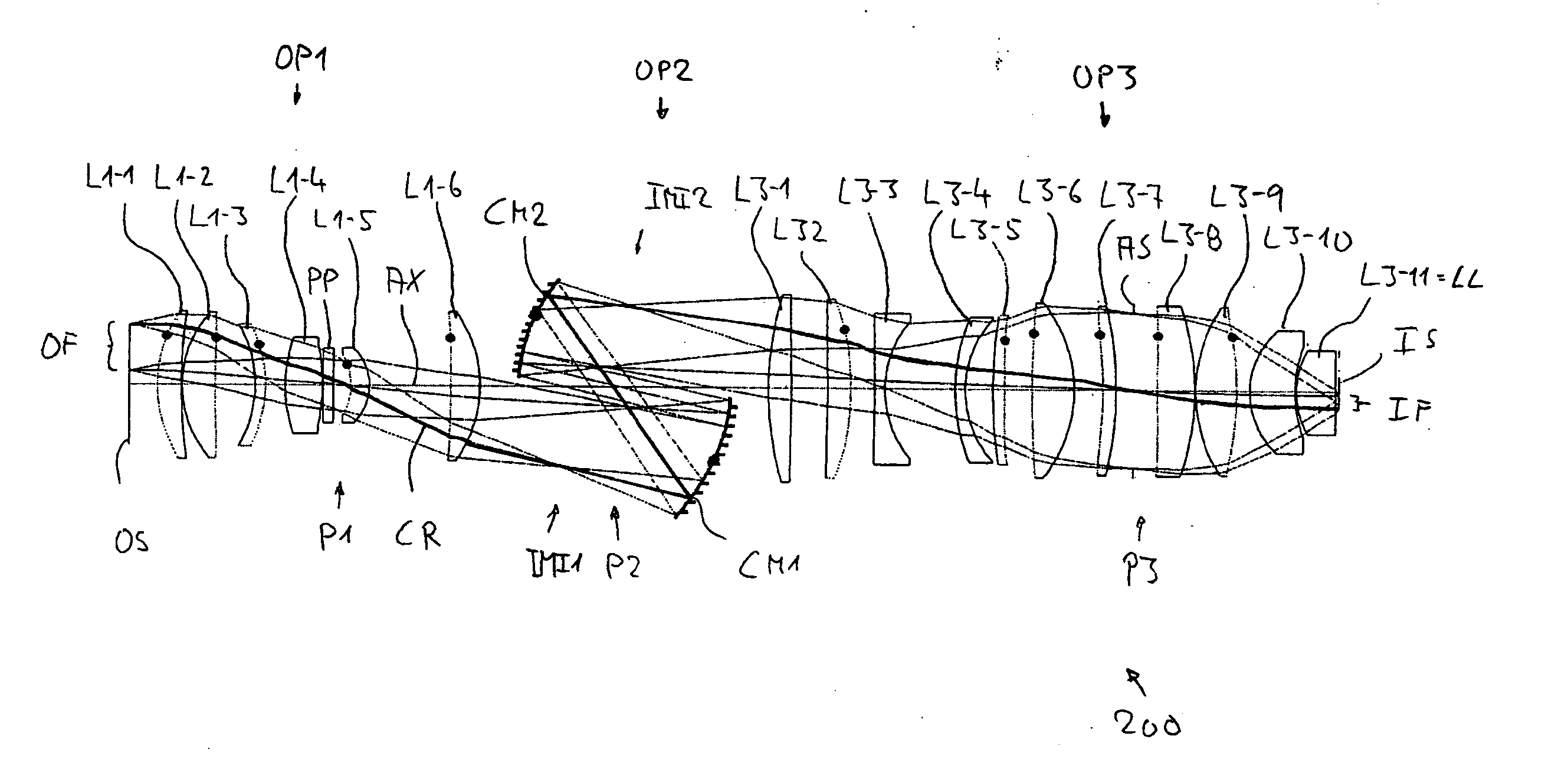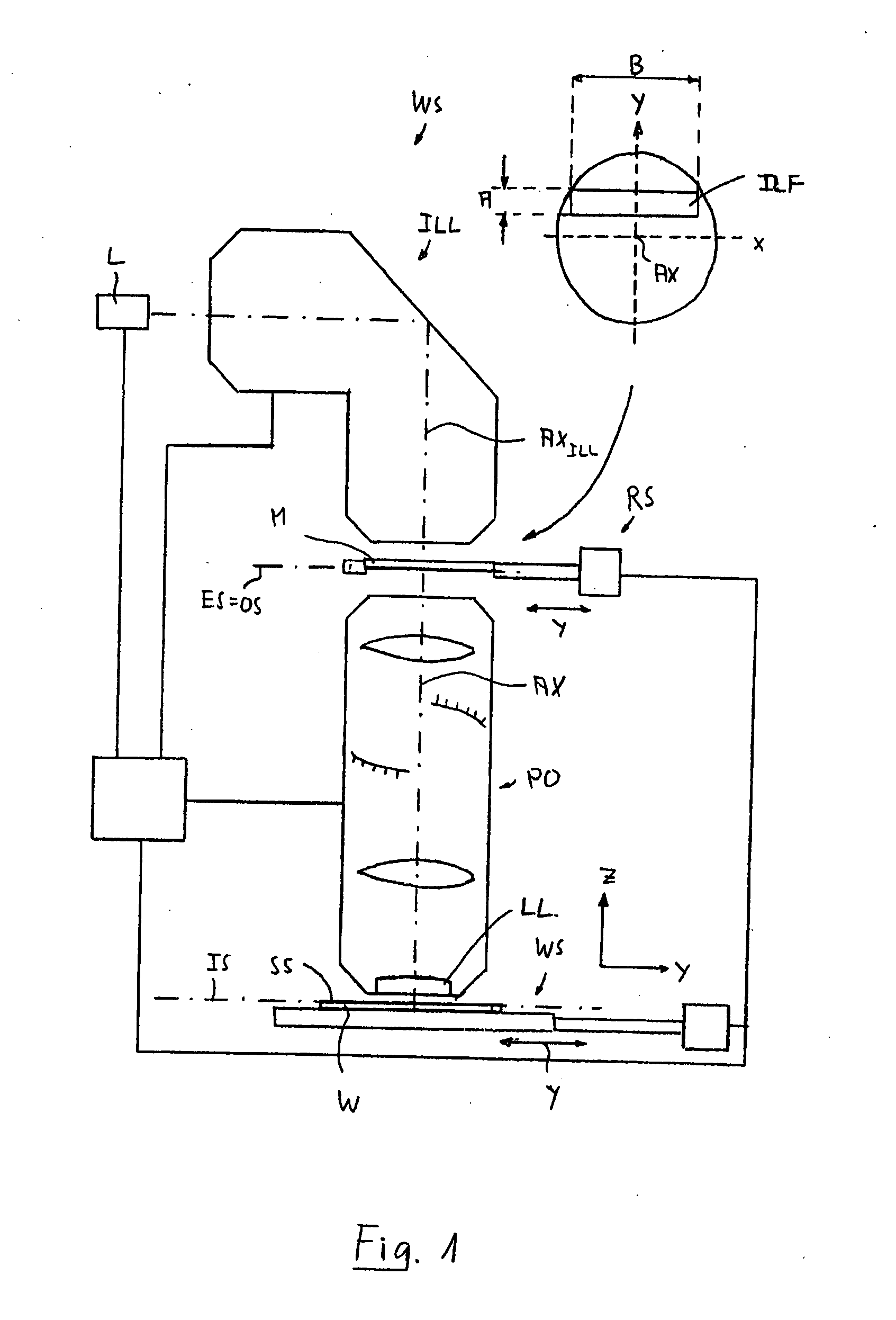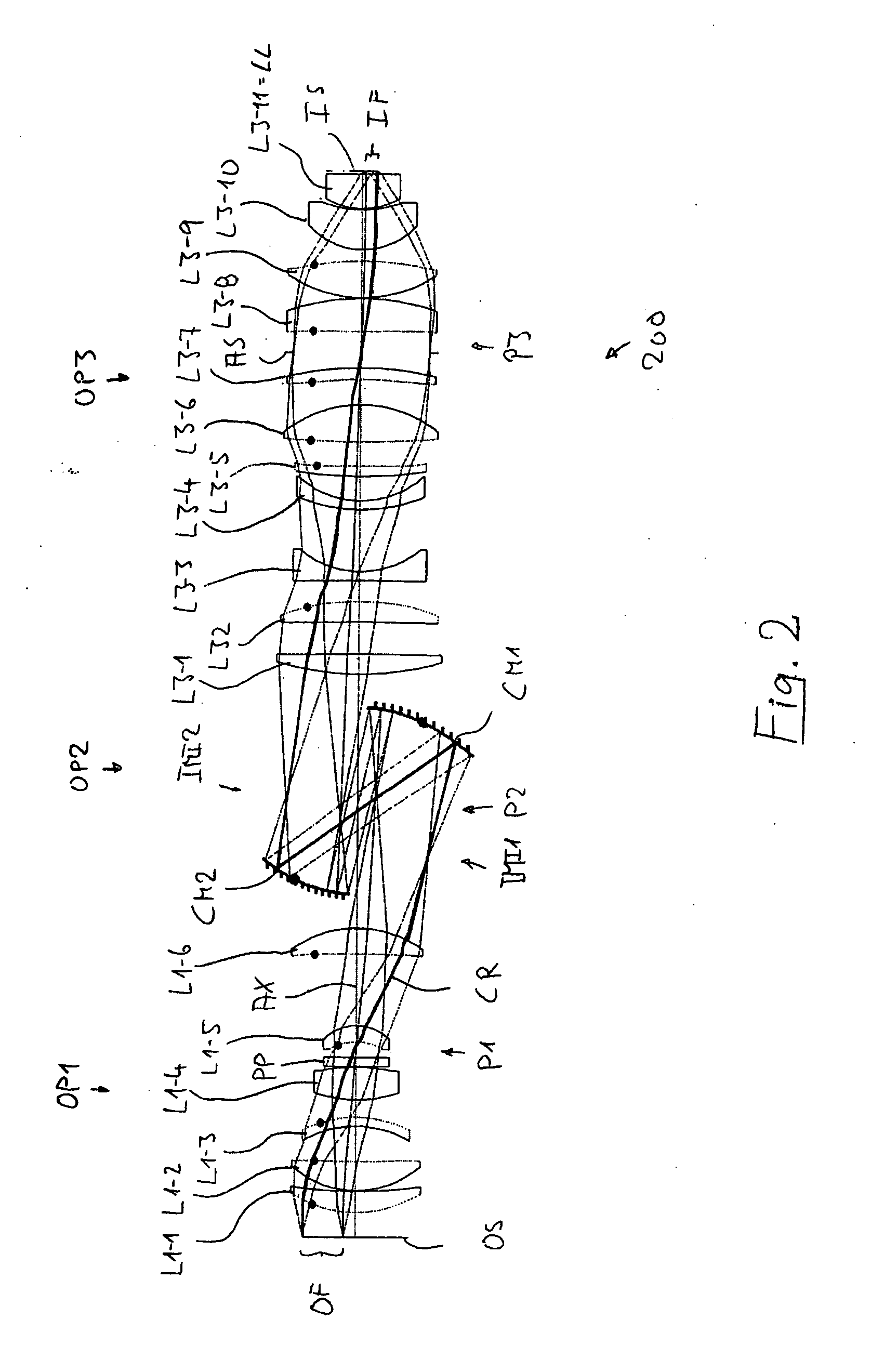Projection objective and projection exposure apparatus including the same
a technology which is applied in the field of projection objective and projection exposure apparatus including the same, and can solve the problems of high price of available materials, difficult color correction, and no useful image obtained outside the effective image field
- Summary
- Abstract
- Description
- Claims
- Application Information
AI Technical Summary
Benefits of technology
Problems solved by technology
Method used
Image
Examples
second embodiment
[0072]FIG. 3 shows projection objective 300 designed as a dry objective for operating wavelength λ=248 nm, having NA=0.88 and image field size 26 mm*5.5 mm. The specification is given in tables 3, 3A.
[0073] Whereas the general layout is similar to the embodiment of FIG. 2, there are some remarkable differences. For example, the first objective part OP1, which has six lenses L1-1 to L1-6 and an additional plane plate PP adjacent to the first pupil surface P1, has positive lenses only, where three positive lenses L1-1, L1-3 and L1-6 are biconvex, thereby providing strong refractive power to collect the rays. The number of lenses is reduced to nine lenses in the third objective part OP3 such that the overall number of lenses is NL=15. Biconvex positive lens L3-1 immediately following the second intermediate image IM12 is the largest lens (Dmax=187.55 mm). At Y′=15.83 the condition COMP=15.299 holds and Dmax / NA=213.1 mm. A comparison with data for projection objective 200 reveals that a...
third embodiment
[0074]FIG. 4 shows projection objective 400 designed as a dry objective for operating wavelength λ=248 nm, having NA=0.93 and image field size 26 mm*5.5 mm. The specification is given in tables 4, 4A.
[0075] The projection objective 400 has only five lenses (in addition to an optional plane parallel PP) in the first objective part OP1. Specifically, the first objective part OP1 has a biconvex positive lens L1-1 having an aspheric entrance surface immediately adjacent to the object surface OS, a positive meniscus lens L1-2 concave towards the image-side, a biconvex positive lens L1-3 following with a small air space, a parallel plate PP adjacent to the first pupil surface P1, a positive lens L1-4 having almost flat entrance surface and aspheric exit surface and a positive meniscus lens L1-5 concave and aspheric on the entrance side. All of these lenses L1-1 to L1-5 are positive lenses, including two biconvex lenses L1-1 and L1-3 and two meniscus lenses L1-2 and L1-5. The third objecti...
fourth embodiment
[0076]FIG. 5 shows projection objective 500 designed as a dry objective for operating wavelength λ=248 nm, having NA=0.93 and image field size 26 mm*5.5 mm. The specification is given in tables 5, 5A.
[0077] A comparison between projection objective 400 and 500 shows that the number of lenses is further reduced in the first objective part OP1. Projection objective 500 may be derived from projection objective 400 by combining the optical action of lenses L1-2 and L1-3 of projection objective 400 to form a single, relatively thick biconvex lens L1-2 in projection objective 500. Corresponding adjustments to surface shape and position are made predominantly in the other lenses of the first objective part. The optimization reduces the number of lenses to four positive lenses in objective part OP1, such that NL=14.
PUM
 Login to View More
Login to View More Abstract
Description
Claims
Application Information
 Login to View More
Login to View More - R&D
- Intellectual Property
- Life Sciences
- Materials
- Tech Scout
- Unparalleled Data Quality
- Higher Quality Content
- 60% Fewer Hallucinations
Browse by: Latest US Patents, China's latest patents, Technical Efficacy Thesaurus, Application Domain, Technology Topic, Popular Technical Reports.
© 2025 PatSnap. All rights reserved.Legal|Privacy policy|Modern Slavery Act Transparency Statement|Sitemap|About US| Contact US: help@patsnap.com



